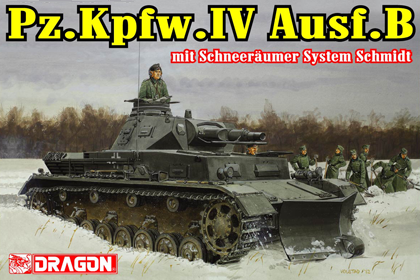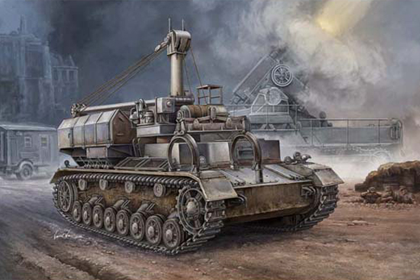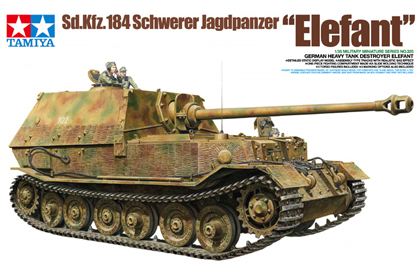This is the Dragon 6162 kit in 1/35 scale, of the ‘German Winter’s Onset – Near Moscow 1941’.

Manufacturer
Where I got it
- Unknown
This is the Dragon 6162 kit in 1/35 scale, of the ‘German Winter’s Onset – Near Moscow 1941’.

This is the Miniart 35021 kit in 1/35 scale, of the ‘German Tank Crew – Winter 1943-1945’.

This is the Dragon 6764 kit in 1/35 scale, of the ‘German Pz.Kpfw.IV Ausf.B, mit Schneeräumer System Schmidt’.

A crew of five operated the Sd.Kfz.161 tank, and it saw service in the 1939-40 campaigns in Poland, Norway and France, and also in the Balkans and in Russia from 1941 onwards.
A snow plow was very useful for winter combat in places like the Eastern Front, which was subject to extreme temperatures and large amounts of snow that severely hampered mobility.
This is the Dragon 6535 kit in 1/35 scale, of the ‘German Sd.Kfz.165 Hummel/Wespe’.

The Sd.Kfz.165 Hummel, of which 714 were produced from late 1942 onwards, was created because of an urgent need for artillery that could keep pace with Germany’s panzers during WWII.
Interestingly, the prototype of the Hummel was originally fitted with a 10.5cm leFH18 gun, the weapon that eventually found its way onto the Wespe that was based on the Panzer II chassis.
This is the Dragon 6155 kit in 1/35 scale, of the ‘German Kampfgruppe von Luck – Normandy 1944’.

He served with the 7th Panzer Division and 21st Panzer Division, seeing action in Poland, France, North Africa, Italy and Russia. He was a close associate of Generalfeldmarschall Erwin Rommel.
This is the Trumpeter 00362 kit in 1/35 scale, of the ‘German Pz.Kpfw.IV Ausf. D/E Fahrgestell’.

There were two Munitionsschlepper for each of the six Gerät 040 Nr. I to VI and one for the experimental Gerät Nr. VII.
This is the Trumpeter 01586 kit in 1/35 scale, of the ‘German Krupp/Ardelt Waffenträger 105mm leFH-18’.

Till end of the war only few prototypes were built.
This is the Trumpeter 01561 kit in 1/35 scale, of the ‘Russian Heavy Tank, KV-1 model 1939’.

First material in KV-1 types L-11s 76.2mm of artillery; July of 1940, the heavy type in the series of KV tank production be transfered by the factory of Kirov the 100 factory production, henceforth the KV-1 that produce all changed to pack better types F-32s in function 76.2mm of artillery.
This is the HobbyBoss 83851 kit in 1/35 scale, of the ‘Russian T-28 Medium Tank – Early version’.

It was an infantry-support tank intended to break through fortified defenses. The T-28 was designed to complement the heavier T-35, with which it shared many components. The type would not have that much success in combat, but it played an important role as a development project for the Soviet designers.
A series of new ideas and solutions were tried out on the T-28 and were later incorporated in future models.
This is the MiniArt 35177 kit in 1/35 scale, of the ‘Russian GAZ-AAA w/Quad M4 Maxim’.

The first dedicated Soviet mount for anti-aircraft machine guns was developed around 1928 by Tokarev and was adopted for service in 1931. It was a base for mounting up to four 7.62mm PM M1910 (Russian Maxim) guns. This was also called a ZPU, although the name М4 was also assigned to it.
M4 Maxim machine gun has the device of compulsory water circulation and bigger capacity of machine-gun tapes — 1000 cartridges, instead of usual 250.
Using antiaircraft ring sights, M4 was effective in fire on low-flying planes (at the height up to 1400 m at a speed up to 500 km/h). M4 was also often used for infantry support.
M4 served the Soviet armed forces in all major conflicts until 1945.
This is the Dragon 6713 kit in 1/35 scale, of the ‘German s.IG.33 auf Fahrgestell Pz.Kpfw.III’.

Five crewmen operated this self-propelled gun that was used exclusively on the Eastern Front. Half fought in the bloody Battle of Stalingrad from October 1942 onwards, where their heavy guns could effectively demolish buildings in the bitter urban combat.
The remaining vehicles didn’t reach Stalingrad because the German 6th Army was encircled by that time, so instead they deployed with the 23rd Panzer Division.
This is the Tamiya 35 325-4800 kit in 1/35 scale, of the ‘German Heavy Tank Destroyer Elefant’.

Elefant Defense – The German heavy tank destroyer Elefant was armed with a powerful 8.8cm L/71 gun which could knock out T-34 tanks at a distance of 2,000m, protected by armor up to 200mm thick, and equipped with advanced features such as a hybrid drivetrain.
It had its roots in the Porsche-designed Ferdinand, which was first deployed into combat during the Battle of Kursk in 1943. The lessons learned from that battle resulted in modifications including the addition of a commander’s cupola, a machine gun for infantry defense, and better tracks and the enhanced vehicle received the new designation Elefant in February 1944.
Elefants were deployed to Italy and the Eastern Front, where they continued to defend against Allied forces until the final skirmishes of the war.